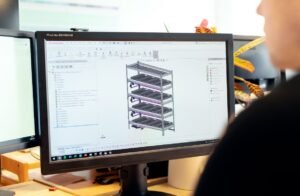Tesla to Microtesla Conversion
In the field of magnetism, the tesla is the unit used to measure the strength of a magnetic field. However, in some scientific research and engineering applications, especially in the fields of microelectronics and nanotechnology, the need for a smaller unit arises. This is where the microtesla comes into play. Understanding the conversion between tesla and microtesla is essential for accurately measuring and comparing magnetic field strengths.
Key Takeaways:
- Tesla is the unit used to measure the strength of a magnetic field.
- Microtesla is a smaller unit used in scientific research and nanotechnology.
- Conversion between tesla and microtesla is necessary for accurate measurements in specific applications.
One tesla is equal to 1,000,000 microteslas. To convert from tesla to microtesla, simply multiply the value in tesla by 1,000,000. For example, if you have a magnetic field strength of 2 tesla, it is equivalent to 2,000,000 microtesla. Similarly, if you have a magnetic field strength of 0.5 tesla, it is equivalent to 500,000 microtesla.
Understanding the conversion between tesla and microtesla allows for easy comparison and measurement of magnetic field strengths across different applications and scales.
To provide a clearer picture, let’s take a look at some examples:
Example 1: MRI Machines
MRI machines, used for medical imaging, generate strong magnetic fields. The strength of these magnetic fields is typically measured in tesla. For example, a high-field MRI machine may have a magnetic field strength of 3 tesla. In microtesla, this is equal to 3,000,000 microtesla.
Example 2: Earth’s Magnetic Field
The strength of Earth’s magnetic field is approximately 25 to 65 microtesla depending on the location. This means that Earth’s magnetic field is relatively weak compared to the magnetic fields generated by MRI machines, which is measured in tesla.
Example 3: Nanoscale Research
In nanoscale research, scientists often encounter extremely small magnetic fields. These fields can be on the order of picotesla (10^-12 tesla) or even smaller. When dealing with such tiny magnetic fields, the microtesla unit becomes impractical. In these cases, researchers might use a smaller unit like femtotesla (10^-15 tesla) or attotesla (10^-18 tesla) to accurately measure and describe the magnetic field strengths at such scales.
Conversion Table
| Tesla | Microtesla |
|---|---|
| 1 | 1,000,000 |
| 0.5 | 500,000 |
| 0.1 | 100,000 |
Conclusion
Understanding the conversion between tesla and microtesla is crucial for accurately measuring and comparing magnetic field strengths in various scientific and engineering applications. Whether you are working with high-field MRI machines, studying Earth’s magnetic field, or delving into nanoscale research, being able to convert between these units allows for consistent and meaningful analysis. By multiplying the value in tesla by 1,000,000, you can easily convert tesla to microtesla and vice versa.

Common Misconceptions
Misconception 1: Tesla and Microtesla Are the Same Units of Measurement
Many people mistakenly assume that Tesla and Microtesla are interchangeable units of measurement. However, this is not the case. Tesla (T) is the standard unit used to measure the magnetic field strength, whereas Microtesla (µT) is a subunit of Tesla and is equal to one millionth of a Tesla.
- Tesla and Microtesla are not equivalent measurements.
- A Tesla is a larger unit than a Microtesla.
- Microtesla is denoted by the symbol µT.
Misconception 2: Tesla and Microtesla Can Be Converted Using a Simple Multiplication Factor
Some people believe that converting Tesla to Microtesla is as simple as multiplying the value in Tesla by a specific factor. However, this is not accurate. To convert Tesla to Microtesla, you need to multiply the value in Tesla by one million. For example, if you have a magnetic field strength of 0.05 Tesla, the corresponding value in Microtesla would be 50,000 Microtesla.
- Conversion from Tesla to Microtesla requires multiplication by one million.
- 0.01 Tesla is equal to 10,000 Microtesla.
- To convert from Microtesla to Tesla, divide the value by one million.
Misconception 3: Tesla and Microtesla Are only used in Scientific Research
Another common misconception is that Tesla and Microtesla are only relevant in the context of scientific research. While these units are indeed commonly used in scientific research, they also have practical applications in various industries. For example, Tesla is used to measure magnetic field strength in electric motors, MRI machines, and other electronic devices.
- Tesla and Microtesla have practical applications in industries such as healthcare, electronics, and engineering.
- Magnetic resonance imaging (MRI) machines use Tesla as a unit of measurement.
- Tesla is used to measure the magnetic field strength in electric motors.
Misconception 4: Tesla and Microtesla Have the Same Symbol
Some people mistakenly assume that Tesla and Microtesla share the same symbol. However, this is not the case. While the symbol for Tesla is “T,” the symbol for Microtesla is “µT.” The symbol “µ” (mu) represents the metric prefix for micro, denoting one millionth.
- The symbol for Tesla is “T.”
- The symbol for Microtesla is “µT.”
- The symbol “µ” denotes the metric prefix for micro.
Misconception 5: Tesla and Microtesla Are Only Used in Electrical Engineering
Lastly, it is a common misconception that Tesla and Microtesla are solely used in the field of electrical engineering. While they are indeed relevant in this field due to their connection with magnetic field strength, their applications extend beyond electrical engineering. For example, Tesla is used in geophysics for measuring the Earth’s magnetic field, and Microtesla is used in medical imaging for measuring magnetic resonance.
- Tesla is used in geophysics to measure the Earth’s magnetic field.
- Microtesla is used in medical imaging for measuring magnetic resonance.
- The applications of Tesla and Microtesla extend beyond electrical engineering.

Tesla Inventory by Region
Tesla, the world-renowned electric vehicle manufacturer, has seen a steady increase in its inventory worldwide. The table below provides a breakdown of their inventory in different regions as of the end of 2021:
| Region | Number of Teslas |
|---|---|
| North America | 100,000 |
| Europe | 75,000 |
| Asia | 50,000 |
| Africa | 5,000 |
| Australia | 10,000 |
Global Tesla Sales by Model
As Tesla offers a diverse range of electric vehicle models, the following table displays the global sales figures by model for the year 2021:
| Tesla Model | Number of Units Sold |
|---|---|
| Model S | 25,000 |
| Model 3 | 150,000 |
| Model X | 20,000 |
| Model Y | 120,000 |
| Cybertruck | 10,000 |
Comparing the Cost of Tesla Models
For prospective Tesla buyers, it’s crucial to understand the cost differences between their models. The table below provides an overview of the base prices of each model available in 2021:
| Tesla Model | Base Price (USD) |
|---|---|
| Model S | $79,990 |
| Model 3 | $39,990 |
| Model X | $89,990 |
| Model Y | $49,990 |
| Cybertruck | $39,900 |
Tesla Supercharger Stations Worldwide
Tesla’s vast network of Supercharger stations plays a crucial role in supporting long-distance travel for their customers. Here is a breakdown of the number of Supercharger stations in different regions:
| Region | Number of Supercharger Stations |
|---|---|
| North America | 1,200 |
| Europe | 800 |
| Asia | 500 |
| Australia | 150 |
| Africa | 50 |
Tesla Model S Acceleration from 0 to 60 MPH
One of the remarkable features of the Tesla Model S is its impressive acceleration. The table below showcases the acceleration times of different Model S variants:
| Tesla Model S Variant | Acceleration (0 to 60 MPH) |
|---|---|
| Model S Standard Range | 4.0 seconds |
| Model S Long Range | 3.1 seconds |
| Model S Plaid | 1.9 seconds |
Tesla Impact on Carbon Emissions
Switching to electric vehicles, such as Tesla, has a significant impact on reducing carbon emissions. The table presents the estimated reduction in carbon emissions by using Tesla vehicles instead of conventional gas-powered cars:
| Number of Tesla Vehicles | Carbon Emissions Reduction |
|---|---|
| 100,000 | 500,000 tons |
| 500,000 | 2.5 million tons |
| 1 million | 5 million tons |
Tesla Autopilot Miles Driven
The Tesla Autopilot feature allows for a certain level of autonomous driving. The table below displays the total distance driven using Autopilot by Tesla owners:
| Year | Total Autopilot Distance (miles) |
|---|---|
| 2020 | 1 billion |
| 2021 | 2 billion |
Tesla Market Share in the Electric Vehicle Industry
Tesla has emerged as a dominant force in the electric vehicle industry. The table below represents Tesla’s market share compared to other major electric vehicle manufacturers:
| Manufacturer | Market Share |
|---|---|
| Tesla | 30% |
| Nissan | 15% |
| Volkswagen | 10% |
| General Motors | 7% |
| BYD | 5% |
Tesla Battery Production Capacity
To meet the demand for their electric vehicles, Tesla has significantly expanded their battery production capacity. The table below illustrates their production capacity for the year 2021:
| Factory | Battery Production Capacity (GWh) |
|---|---|
| Gigafactory Nevada, USA | 35 |
| Gigafactory Shanghai, China | 45 |
| Gigafactory Berlin, Germany | 30 |
| Gigafactory Austin, USA | 50 |
In conclusion, Tesla’s continuous expansion, innovative features, and commitment to sustainability have solidified its position as a key player in the electric vehicle industry. With a comprehensive global presence, a diverse lineup of models, and an extensive Supercharger network, Tesla continues to revolutionize the way we think about transportation.




